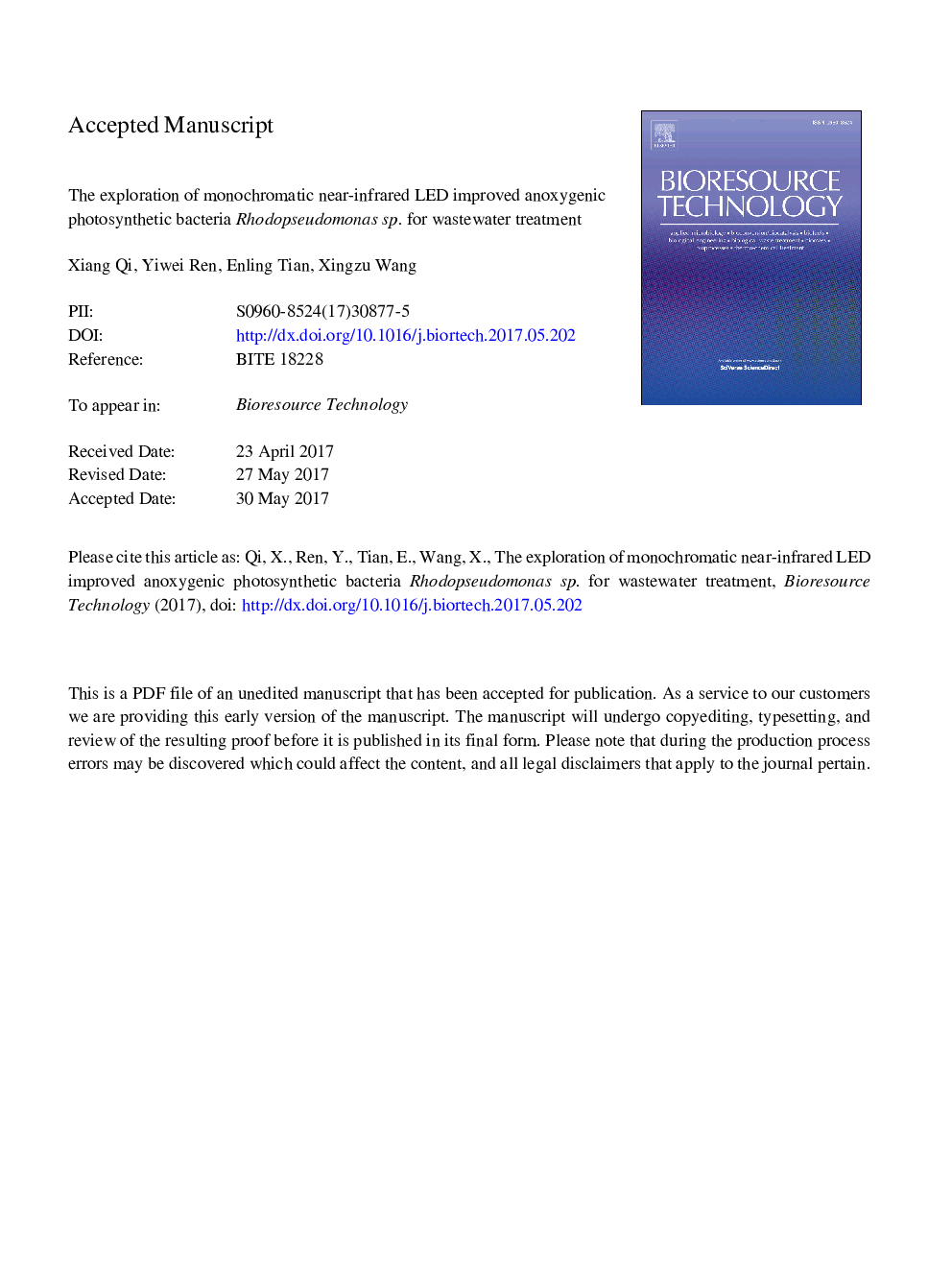| Article ID | Journal | Published Year | Pages | File Type |
|---|---|---|---|---|
| 4997025 | Bioresource Technology | 2017 | 21 Pages |
Abstract
The future wastewater treatment requires high-efficiency and energy-saving technology. Anoxygenic photosynthetic bacteria (APB) is deemed as an eco-friendly microorganism, which could be employed in wastewater treatment. Here, monochromatic near-infrared (MNIR) light emitting diode (LED) was used, and three key factors (light quality, light intensity and photoperiod) of it were analyzed by a response surface methodology (RSM) in APB wastewater treatment. The results showed that light quality was the biggest impact factor in APB wastewater treatment, and nearly 58.07% of NH4+-N and 70.62% of chemical oxygen demand (COD) could be removed based on 46.4% of that theoretically possible. The light quality's study revealed that APB had the highest NH4+-N and COD removal, biomass production, and bacteriochlorophyll a production with 850Â nm IR LED. Moreover, the application of optimal MNIR LED could not only save energy, but also avoid algae bloom of photo-bioreactors (PBR).
Related Topics
Physical Sciences and Engineering
Chemical Engineering
Process Chemistry and Technology
Authors
Xiang Qi, Yiwei Ren, Enling Tian, Xingzu Wang,
